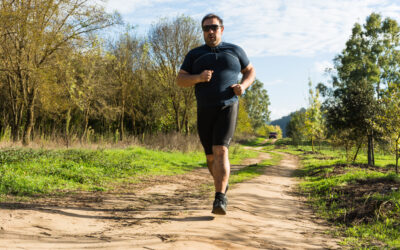The Best Bench Press Warm Up Strategy
TOPIC: Exercise guides | Strength & Conditioning
We get it. You’re pressed for time in the gym. But skipping the warm up is the surest way to underperform and risk injury. This 3D approach to your bench press warm up not only allows you to lift more weight, but also ensures the long-term health of your shoulder joints and ligaments (which are especially at risk when bench pressing).

Written By
marc lavallee
Marc Lavallee has trained Canadian military units in the Search and Rescue Technician (SAR-Tech) program along with members in their active duty and selection phases. He currently coaches for a policing agency.
Programs
Don’t Clown Around With Your Warmups
We’ve all seen that casual gym bro come straight out of the changing room, walk over to the bench press and do a couple of arm swings, then move directly into a working set of 135lbs or 225lbs on the bar. Maybe we’ve even been that guy – don’t lie!
The problem with this lack of warm up is that it can limit your longevity in the weight room, especially when it comes to barbell movements. Without a proper warm up, you’re essentially beating up your joints and muscle tissues.
The barbell bench press can wreak havoc on your shoulders over time.
I see many programs include a ton of scapular-focused primer movements, but that’s only hitting one piece of a well-rounded warm up. For an injury-free bench press, you need a 3D approach to your warm up that includes thoracic mobility, scapula activation, internal rotation inhibition, and external rotation activation.
4 Keys to an Optimal Bench Press
#1 Improve Your Thoracic Mobility
Tackling t-spine mobility depends on your restriction in thoracic extension/flexion and rotation. Getting an assessment is the best way to find this out. An assessment for thoracic extension usually consists of testing your range of motion when lifting your arms above your head:
You can easily test your thoracic rotation at home. Position yourself into child’s pose, place a hand behind your back, and rotate up toward the hand on your back. You should be able to rotate at least 50 degrees.
Once you’ve determined your thoracic limitations/restrictions, add the necessary exercises to your warmup in order to get those tissues mobile. If your thoracic extension could use some work, get a foam roller and actively move through extension and flexion with the roller on your upper back.
If you need help with thoracic rotation, try the thread-the-needle movement. Position yourself into a quadruped (all fours) position and “thread” one arm under your body and across/past your other arm. Repeat this motion on the other side.
#2 Activate Your Scapula
The next part of a proper bench press warm up is activating your scapula retractors. Getting an upper back pre-bench pump preps all of the necessary muscle groups prior to starting your bench press/chest workout.
Some common examples of scapular-dominant movements are band pull-aparts, face pulls, scap push-ups, and YTW stretch.
#3 Inhibit Internal Rotation
The bench press requires you to internally rotate your shoulders forward. As a part of this warm up, you want to inhibit internal rotation. Basically, this is just stretching the muscles responsible for internal rotation.
To accomplish this, you need to do more than just stretch your chest/pecs. What other muscles are involved in internally rotating your shoulders? That’s right, your lats.
There’s a number of ways you can stretch your lats. I suggest picking a few of your favorites and holding them for 3-4 deep breaths.
#4 Activate External Rotation
The final portion of this warm up is activating external rotation (rotator cuff exercises). Your rotator cuffs include three main muscles: teres minor, supraspinatus, and infraspinatus. These muscles help stabilise the shoulder by allowing the head of the humerus to properly fit into its socket with muscular balance front-to-back.
You can activate these muscles with cables, bands, and/or dumbbells from seated or standing positions.
I recommend doing these four movements for 2-3 sets. To incorporate them into your program, perform all four movements, then complete one warm up set of bench press with an empty barbell. Go back to your warm up and complete the total number sets.
Remember: your warm up should be fluid and written with a pencil, not a pen. I say this because you don’t want to be following the same warm up routine forever. Your warm up should change with your workout and with any injury concerns or sticky tissues.
I recommend periodically getting assessed to see if you need any different exercises or modifications.
Increasing blood flow and adequately warming up your ligaments is the best way to reduce injury, prime your muscles to lift more weight, and hit new PRs. The next time your workout includes the bench press, try this comprehensive warm up method and see how your session goes.
Find Your Perfect Training Plan
Sometimes all you need to reach your destination on your fitness journey is an expert guide. Look no further, we've got you covered. Browse from thousands of programs for any goal and every type of athlete.
Try any programming subscription FREE for 7 days!
Related Articles
You May Also Like...
How to Do Preacher Curls for Bigger Biceps
Who doesn’t love hitting a good biceps workout and feeling that skin-splitting pump? The preacher curl is a great exercise for bulking up your biceps, but using the EZ bar isn’t the best option for everyone. To build juicy biceps without pissing off your elbow joint,...
Breaking Through the Plateau: Taking Your Weight Loss Journey to the Next Level
You’ve shown up day after day, sweated through workouts, and resisted more cravings than you can count. But the numbers have ground to a stable halt.Hitting a plateau isn’t a failure, it’s proof you’ve been consistent and made real progress. Think of a plateau as your...
A Deep Dive Into the Mind-Muscle Connection
Ever heard of the “mind-muscle connection” and thought, it’s gotta be bogus, right? But some of the top competitive bodybuilders (Arnold included) have used this method in their training and swear by it. Is it real? Are you doing it right? Learn up.Written Byjack shaw...
How to Do Preacher Curls for Bigger Biceps
Who doesn’t love hitting a good biceps workout and feeling that skin-splitting pump? The preacher curl is a great exercise for bulking up your biceps, but using the EZ bar isn’t the best option for everyone. To build juicy biceps without pissing off your elbow joint,...
Breaking Through the Plateau: Taking Your Weight Loss Journey to the Next Level
You’ve shown up day after day, sweated through workouts, and resisted more cravings than you can count. But the numbers have ground to a stable halt.Hitting a plateau isn’t a failure, it’s proof you’ve been consistent and made real progress. Think of a plateau as your...

Want more training content?
Subscribe
For Coaches
For Athletes
About
Support
Training Lab
Access the latest articles, reviews, and case studies from the top strength and conditioning minds in the TH Training Lab!
Made with love, sweat, protein isolate and hard work in Denver, CO
© 2024 TrainHeroic, Inc. All rights reserved.





